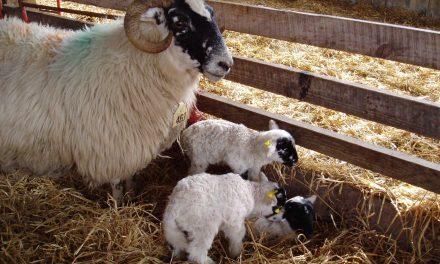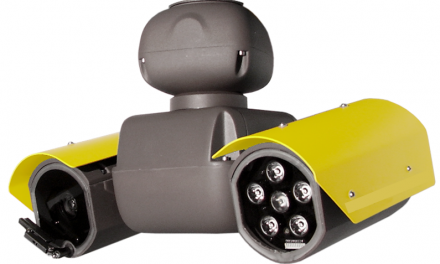This post is also available in:
![]()
![]()
![]()
Country: Spain
Dairy or/and meat sheep: Dairy and meat
Source of information: Bibliography, Technical Services and Neiker
Level of solution:
x |
Knowledge |
x |
Practical |
|
|
Just Being Tested |
Aim: To select and prepare reproductive females and males
Description:
- What is implemented;
Adult males or females must have a good general condition (i.e. no lameness, mastitis or previous reproductive disorders) and body condition score (BCS=3 for males or ≥2.5 in females); otherwise, supplementary feeding before matings (flushing) is suggested. - How is implemented;
Males: Optimal age from 20-24 months to 7 years-old;
- The reproductive organs (testicles, penis and foreskin) should be assessed: no injuries, or signs of infections; The testicles should be firm, elastic and of good size (> 35 cm).
- Any treatment (vaccination, deworming or shearing), before starting the mating season;
- Balanced feeding, and mineral corrector with ammonium chloride in a 1.25-1.5% to avoid urolithiasis;
- Ideally, take semen samples to assess in a laboratory the quality of the sperm.
Sheep: Optimal age from 7 months to 7 years-old;
- At least 2-4 months after the last lambing.
- Sheep should not be dried during the cycle previous or after the start of the matings.
- Minimal BCS=2,5 and gaining weight at the matings.
- Any treatment (vaccination, deworming or shearing), at least 3 weeks before or 3 weeks after starting the mating season;
- When is it implemented.
Rams: 2 months before the start of the mating season.
Sheep: 1 month before the start of the mating season
Expected benefits: To decrease the number of non-productive sheep and to concentrate the lambings.
Prerequisites and/or limits (knowledge, training, capabilities, cost, management, facilities, equipment, etc.)
- Availability of space to manage different batches of animals
- Higher costs: feeding and labour
- Education and training of technical services to collect sperm samples and to assess sperm quality analysis (spermiogram).
- Equipment required: electroejaculators and microscope.
Specific publications
Matos, C. A. P., & Thomas, D. L. (1992). Physiology and genetics of testicular size in sheep: a review. Livestock Production Science, 32(1), 1–30. https://doi.org/10.1016/S0301-6226(12)80009-1
Maina, D., & Katz, L. S. (1997). Exposure to a recently mated male increases ram sexual performance. Applied Animal Behaviour Science, 51(1–2), 69–74. https://doi.org/10.1016/S0168-1591(96)01092-1
Schmidov??, J., Milerski, M., Svit??kov??, A., & Vostr??, L. (2016). Effects of service ram on litter size in Romanov sheep. Small Ruminant Research, 141, 56–62. https://doi.org/10.1016/j.smallrumres.2016.05.018
Courot, M., & Volland-Nail, P. (1991). Management of reproduction in farm animals: Present and future. Biotechnology and Biotechnological Equipment, 5(3), 1–12. https://doi.org/10.1080/13102818.1991.10818626
Gouletsou, P. G., & Fthenakis, G. C. (2010). Clinical evaluation of reproductive ability of rams. Small Ruminant Research, 92(1–3), 45–51. https://doi.org/10.1016/j.smallrumres.2010.04.005
Van Metre, D. C., Rao, S., Kimberling, C. V., & Morley, P. S. (2012). Factors associated with failure in breeding soundness examination of Western USA rams. Preventive Veterinary Medicine, 105(1–2), 118–126. https://doi.org/10.1016/j.prevetmed.2012.02.002
Scaramuzzi, R. J., Campbell, B. K., Downing, J. a, Kendall, N. R., Khalid, M., Muñoz-Gutiérrez, M., & Somchit, A. (2006). A review of the effects of supplementary nutrition in the ewe on the concentrations of reproductive and metabolic hormones and the mechanisms that regulate folliculogenesis and ovulation rate. Reproduction, Nutrition, Development, 46(4), 339–354. https://doi.org/10.1051/rnd:2006016
Tips & Tricks
Selecting for fertility, litter size and longevity in big unrecorded flocks
Selecting ewes for temperament
Measuring tape to assess the testicular perimeter of rams
Use of technology for productivity
Expected impacts:
| Benefit | |||||||
| Benefit expected | Increase productivity fertility prolificacy better labor organisation better feed management |
||||||
| System | |||||||
| Is the solution suitable for various production systems | Y | ||||||
| If no – for which system | The thresholds for the BCS, depend on the aptitude of the breed, The selection of the rams requires education and training of personnel | ||||||
| Cost | |||||||
| What are the asset costs | 100-500 | ||||||
| What are the maintenance costs | <50 | ||||||
| Any limits to its applicability | |||||||
| Work Load | |||||||
| Farmers | Service provider/tech.-vet-others | ||||||
| How much time is required to prepare and implement the solution | <1 day | <1 day | |||||
| How many people is needed to implement the solution? | 1 | 1 | |||||
| Timing | |||||||
| How long it takes to get results? | >=1week | ||||||
| How long it takes to see an effect on sheep productivity? | current production period | ||||||
| Equipment/Facility | |||||||
| Farmers | Service provider/technicians-vet-others | ||||||
| What kind of equipment/tool are necessary? | chart, leaflet, handling pens | electroejaculators and microscope | |||||
| Skill/Knowledge-Training (farmer) | |||||||
| Does the solution need any specific skill/knowledge or training? | Yes, farmer and technicians | ||||||
| How much time will be required for training | 1 day | ||||||
| Wider Environment | |||||||
| Is there any particular regulation link to the solution? | Sperm assessment needs specific training | ||||||
| Does the solution need any particular structure or organisation? | No | ||||||
| Other Comments | |||||||
| cost of assessment around 10 €/ ram + training in BCS | |||||||







